The digital transformation of home services has revolutionised how Americans find and book local contractors, cleaners, and repair professionals. With the home services app that lists local vendors becoming essential for busy homeowners, these platforms have evolved from simple directory listings to sophisticated marketplaces that connect customers with trusted professionals instantly.
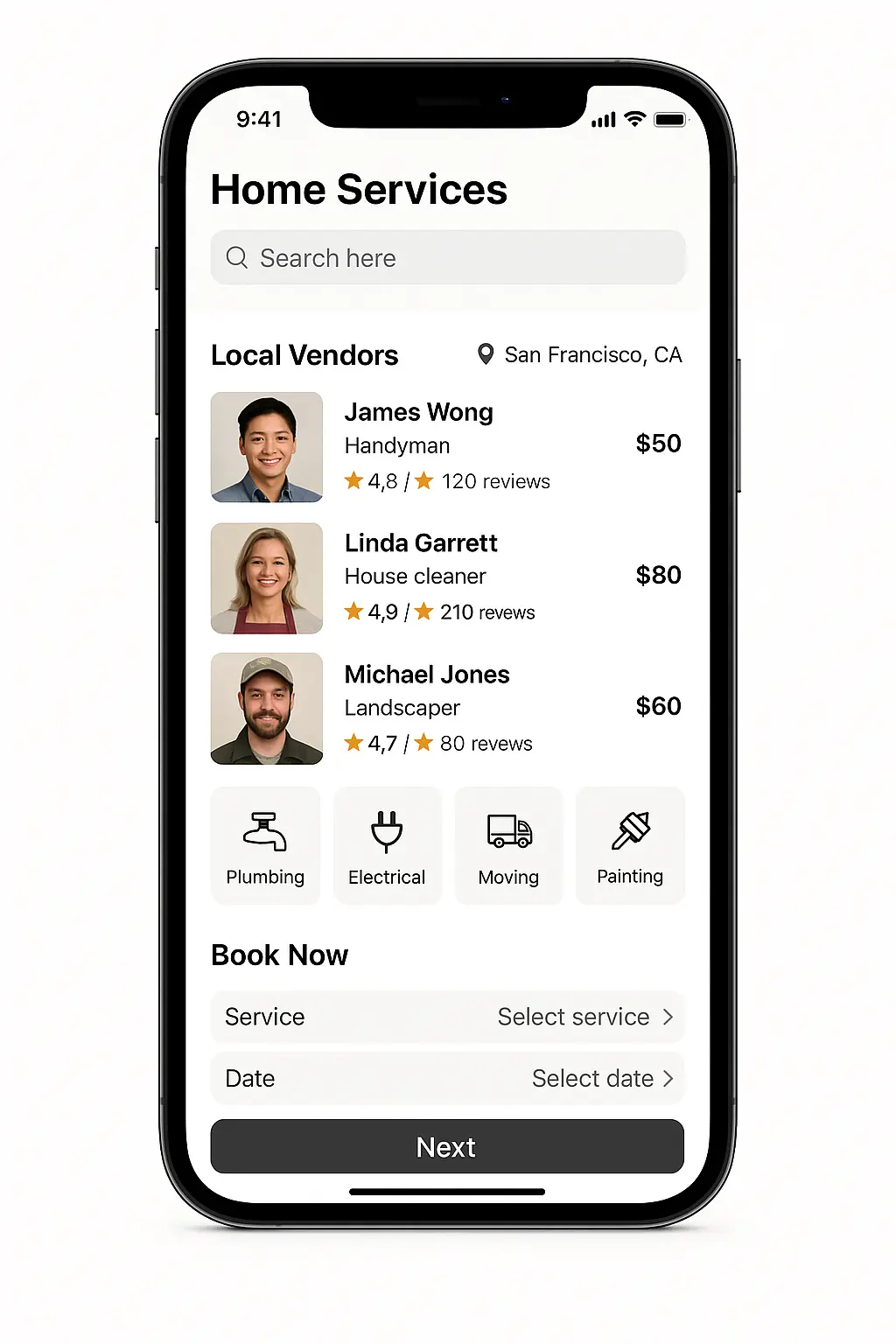
The online on-demand home services market represents one of the fastest-growing sectors in the digital economy. The global market size reached $5 billion in 2023 and is projected to hit $21 billion by 2030, representing a compound annual growth rate of 16.7%.
This explosive growth reflects changing consumer preferences toward convenience, transparency, and instant access to professional services.
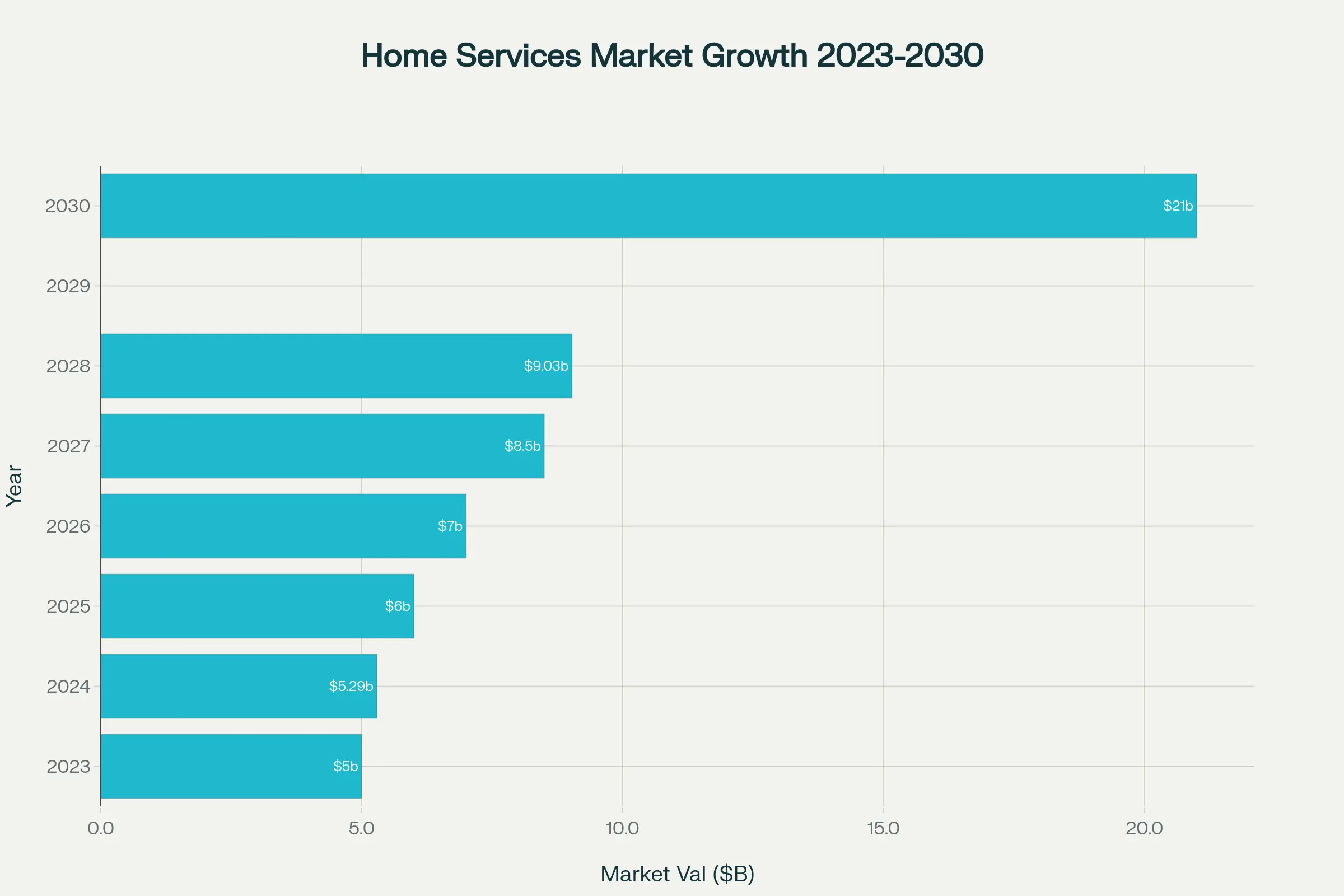
In the United States specifically, the home services market hit $90.63 billion in 2024 and is on track to double to $181.64 billion by 2034. American households now spend approximately $5,000 annually on home services, driven by factors including ageing housing stock, increased homeownership rates, and greater home equity, enabling more spending on upgrades and maintenance.
Leading Home Services App That Lists Local Vendors
Major Market Players
The home services app that lists local vendors and landscape features several dominant platforms, each with unique approaches to connecting customers with service providers:
TaskRabbit operates as a same-day service platform, excelling at quick tasks like furniture assembly, cleaning, and minor repairs. The app charges customers directly rather than service providers, eliminating lead generation costs for professionals. TaskRabbit’s strength lies in its flexibility and immediate booking capabilities, though it faces challenges with market saturation in competitive areas.
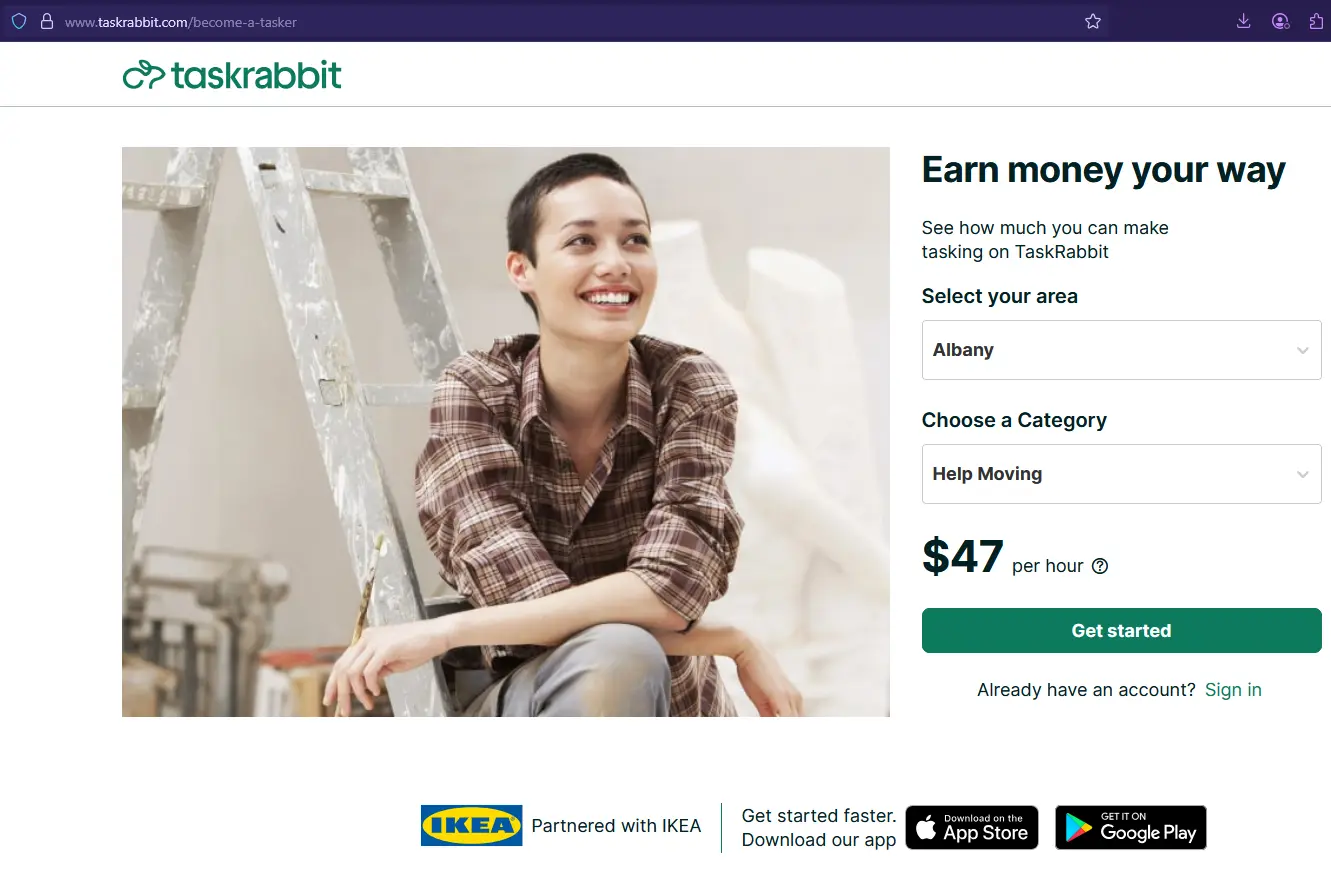
Thumbtack focuses on comprehensive home services, allowing customers to compare quotes from multiple professionals for larger projects like renovations and specialised services. The platform uses a lead generation model where professionals pay for potential customer contacts, making it ideal for contractors who prefer bigger projects with larger budgets.
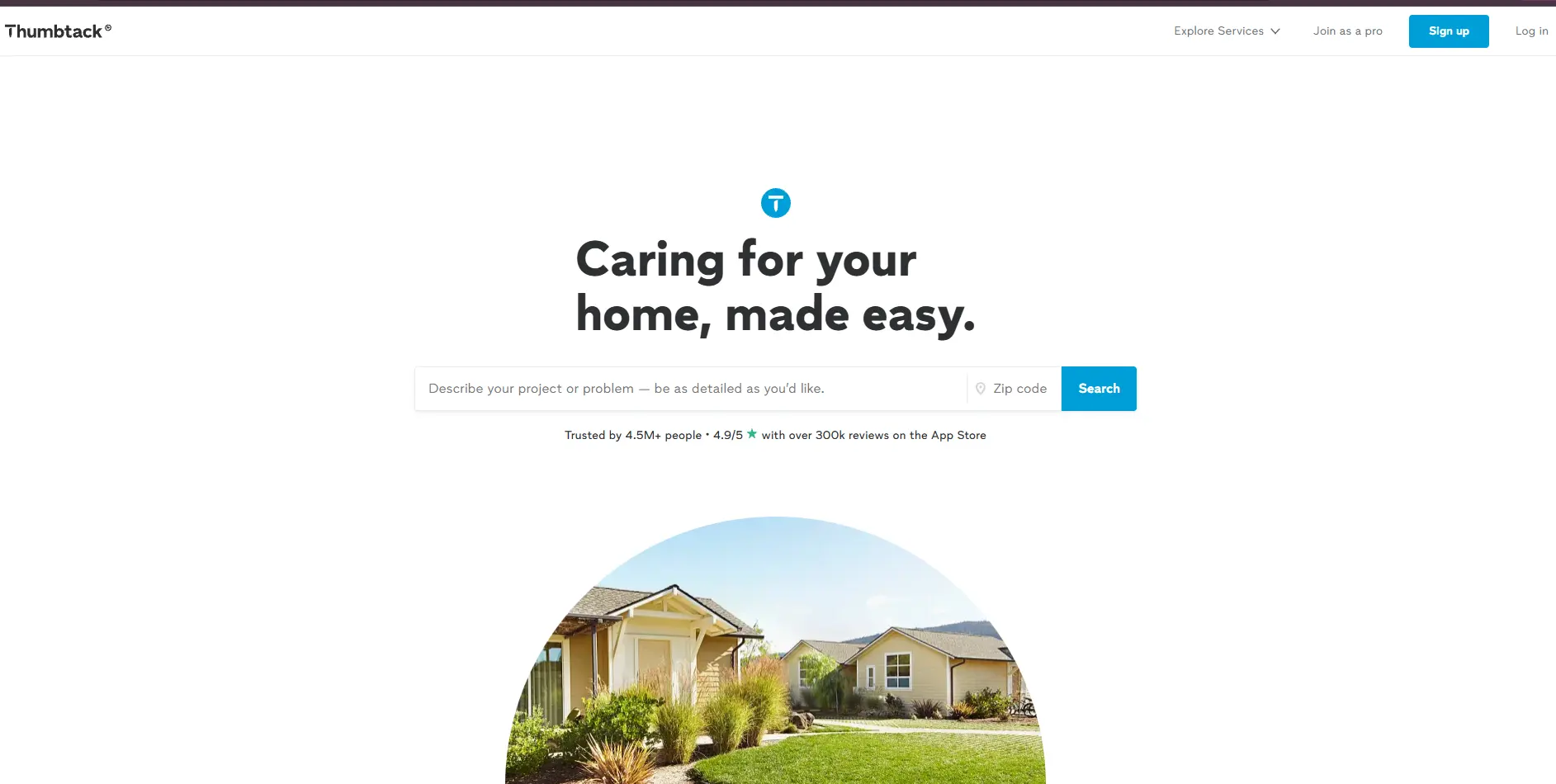
Angi (formerly Angie’s List) emphasises verified professionals and quality control, offering background checks and warranties for customer peace of mind. The platform manages the entire process from lead generation to job completion, providing reliability for both customers and service providers.
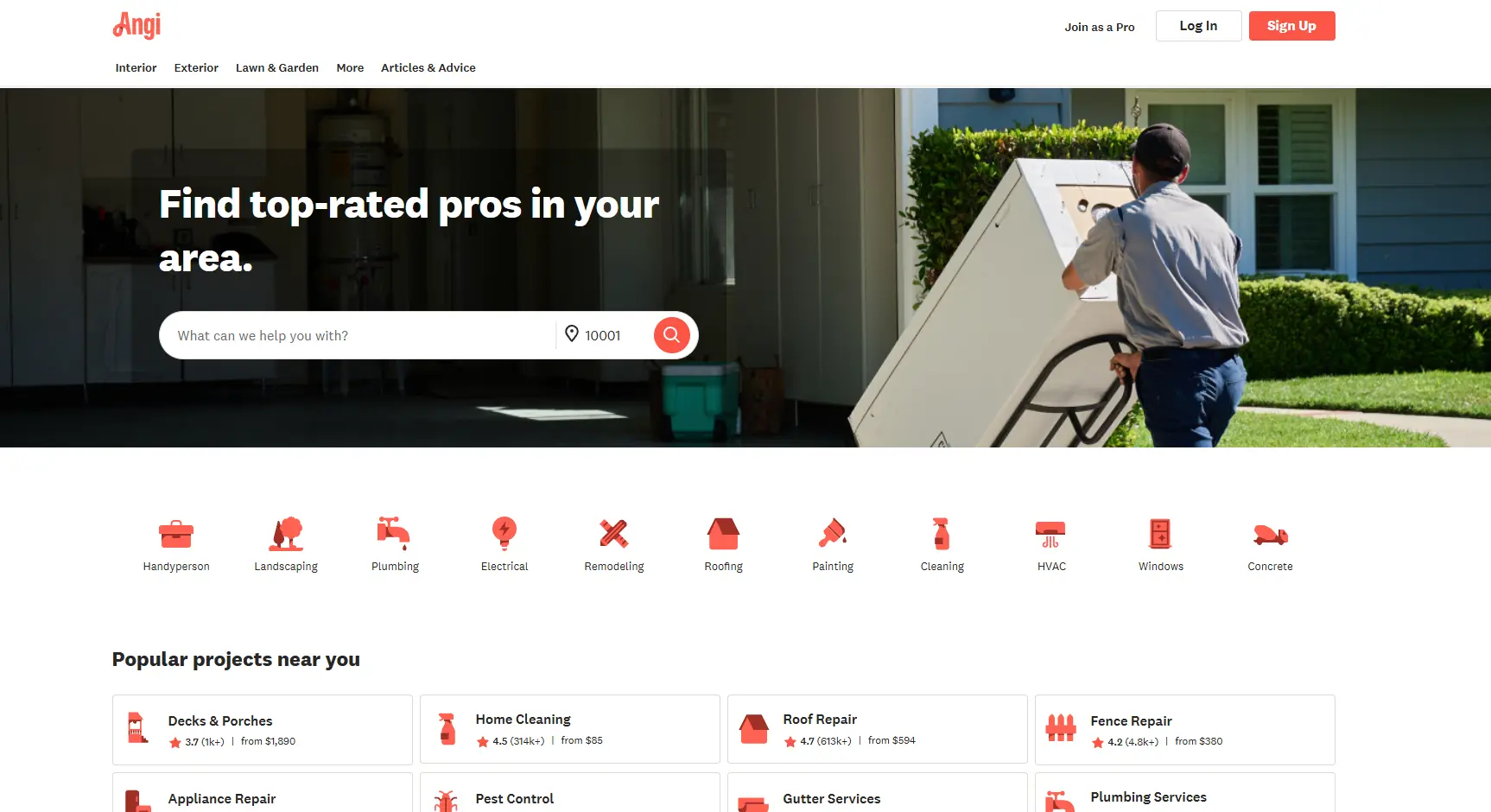
| Platform | Specialty | Pricing Model | Key Advantage |
|---|---|---|---|
| TaskRabbit | Same-day tasks | Customer pays fees | No upfront costs for providers |
| Thumbtack | All home services | Providers pay for leads | Wide service variety |
| Angi | Home improvement | Quote-based | Quality verification |
| Urban Company | Beauty & home | Fixed pricing | Trained professionals |
Essential Features of a Home Services App That Lists Local Vendors
Customer-Focused Features
A successful home services app that lists local vendors must prioritise user experience through intuitive design and comprehensive functionality. User-friendly interfaces remain paramount, as 89% of consumers abandon apps that are difficult to navigate. Essential customer features include:
Smart search capabilities enable customers to browse categorised services based on their specific needs. Real-time tracking provides transparency throughout the service delivery process, allowing customers to monitor their service provider’s location and estimated arrival time.
Multiple payment options cater to diverse customer preferences, including credit cards, digital wallets, and cash-on-delivery alternatives. Secure payment processing builds trust through encryption and compliance with industry standards like PCI-DSS9.
Provider-Focused Features
Service providers require robust tools to manage their business operations effectively. Provider profiles with ratings and reviews help establish credibility and attract new customers. Booking management systems allow providers to control their availability and accept jobs that fit their schedule.
In-app communication tools eliminate the need for external messaging platforms, streamlining coordination between customers and providers. Automated scheduling features can reduce administrative overhead and minimise booking conflicts.
Business Models and Monetisation Strategies for a Home Services App That Lists Local Vendors
Revenue Generation Approaches
Home services apps that list local vendors employ various monetisation strategies to generate sustainable revenue:
Commission-based models charge a percentage of each completed transaction, typically ranging from 15-25% depending on the service category. This approach aligns platform success with provider earnings, creating incentives for quality service delivery.
Subscription models offer monthly or annual plans for frequent users, providing predictable revenue streams. Some platforms implement tiered subscriptions with varying feature access levels.
Lead generation fees charge service providers for customer contact information, shifting costs from consumers to professionals seeking business growth. This model works particularly well for high-value services like home renovations.
Geographic Expansion Considerations
North America accounts for approximately 70% of the global online on-demand home services market1, making it the primary focus for platform expansion. However, the Asia-Pacific region is expected to record the highest compound annual growth rate, driven by rising per capita income and rapid urbanisation.
Technology Trends Shaping the Industry
Artificial Intelligence Integration
AI and machine learning optimisation are transforming how home services apps operate, from smart customer matching to predictive maintenance scheduling. AI-powered chatbots provide 24/7 customer support, ensuring queries are addressed promptly and reducing operational costs.
Predictive analytics leverages user behaviour data to suggest services before customers actively search for them, enhancing convenience and increasing booking conversion rates.
Internet of Things (IoT) Connectivity
IoT integration enables smart home compatibility, allowing service apps to interface directly with connected home systems for energy management and security monitoring. Automated service scheduling based on device usage patterns brings unprecedented convenience to homeowners.
Real-time service enhancements through IoT devices provide immediate feedback during service delivery, enabling quick adjustments and improved customer satisfaction.
Mobile-First Design Evolution
Enhanced mobile apps for both technicians and customers represent a critical trend for 2025. Technicians rely increasingly on feature-rich mobile applications for job details, customer communication, and payment processing, while customers expect seamless booking and tracking experiences.
Cloud-based solutions provide scalability and data backup capabilities, enabling platforms to handle growing user bases without performance degradation.
Benefits for Local Service Providers
Expanded Market Reach
Traditional service providers often rely on word-of-mouth referrals and local advertising, limiting their customer base to immediate geographic areas. A home services app that lists local vendors enables small businesses to reach customers across wider geographic regions without establishing physical locations.
Digital visibility for a home services app that lists local vendors ensures service providers appear in online searches, capturing 85% of consumers who search online first when looking for local services. This digital presence becomes increasingly critical as younger demographics replace traditional service discovery methods.
Operational Efficiency
Automated booking systems reduce administrative overhead by eliminating phone calls and manual scheduling. Integrated payment processing streamlines financial transactions and reduces collection issues common in cash-based service businesses.
Customer relationship management tools built into these platforms help providers track service history, preferences, and feedback, enabling personalised service delivery that increases customer retention.
Professional Development
Rating and review systems provide valuable feedback for continuous improvement while building reputation and credibility. Training resources and certification programs offered by some platforms help providers enhance their skills and command higher rates.
Business analytics available through provider dashboards offer insights into customer behaviour, peak demand periods, and pricing optimisation opportunities.
Consumer Benefits and User Experience
Convenience and Accessibility
Modern consumers prioritise convenience in service booking, expecting instant access to trusted professionals through intuitive mobile interfaces. One-click booking systems eliminate lengthy phone calls and scheduling conflicts, while transparent pricing builds trust through upfront cost disclosure.
24/7 availability allows customers to book services outside traditional business hours, accommodating busy professional schedules and emergencies.
Quality Assurance
Background verification processes provide peace of mind by ensuring service providers meet safety and competency standards. Insurance coverage and satisfaction guarantees protect customers from service failures and property damage.
Standardised service quality through platform-mandated training and certification programs ensures consistent experiences across different providers.
Cost Efficiency
Competitive pricing emerges naturally from platform-based competition, as customers can easily compare quotes from multiple providers. Promotional offers and loyalty programs further reduce costs for frequent users.
Elimination of middleman markups in some models allows customers to pay providers directly, reducing overall service costs.
Implementation Strategies for Success
Technology Infrastructure
Successful home services apps that list local vendors require robust technical foundations, including scalable cloud architecture, secure payment gateways, and real-time communication systems. API integrations with mapping services, payment processors, and communication platforms ensure seamless functionality.
Mobile optimisation remains critical, as mobile usage accounts for over 60% of home services app interactions. Progressive web app capabilities can provide app-like experiences without requiring downloads.
Onboarding and Management for a Home Services App That Lists Local Vendors
Effective vendor vetting processes for a home services app that lists local vendors include background checks, license verification, and skill assessments to maintain platform quality standards. Tiered service provider levels can incentivise performance improvements while providing customers with clear quality indicators.
Training programs and resource centres help new providers understand platform expectations and best practices for customer service.
Marketing and Customer Acquisition
Local SEO optimisation ensures platforms appear in location-based searches for home services. Referral programs leverage satisfied customers to drive organic growth while social media marketing builds brand awareness and community engagement.
Partnership strategies with real estate agents, property management companies, and home improvement retailers can provide steady referral streams.
Challenges and Solutions
Market Saturation
The home services app that lists local vendors faces intense competition in major metropolitan areas can make customer acquisition expensive and provider recruitment challenging. Niche specialisation and geographic expansion into underserved markets offer growth opportunities beyond saturated urban centres.
Quality Control
The home services app that lists local vendorsMaintaining consistent service quality across diverse providers requires comprehensive rating systems, regular performance monitoring, and swift dispute resolution processes. Continuous training programs and quality audits help maintain standards.
Regulatory Compliance
Local licensing requirements and insurance regulations vary significantly across jurisdictions, requiring platforms to adapt their compliance frameworks for different markets. Legal partnerships with local experts can ensure regulatory adherence while minimising compliance costs.
Future Outlook and Opportunities
The home services app that lists local vendors market shows no signs of slowing, with technological advancement trends including augmented reality for diagnostics, robotics for specific tasks, and enhanced cybersecurity measures shaping the industry’s evolution.
Sustainability focus represents an emerging opportunity, as 70% of consumers prefer eco-friendly home services. Platforms that prioritise environmentally conscious providers and promote green practices can differentiate themselves in increasingly competitive markets.
Integration with smart home ecosystems will likely become standard, as the smart home market grows from $174 billion in 2025 to $250.6 billion by 2029. This convergence creates opportunities for predictive maintenance, automated service scheduling, and enhanced customer experiences.
The home services app that lists local vendors represents more than a technological convenience—it embodies a fundamental shift toward digital-first service delivery that benefits consumers, providers, and the broader economy. As this market matures, platforms that prioritise quality, convenience, and innovation will continue to thrive in America’s evolving service landscape.
Read Also:

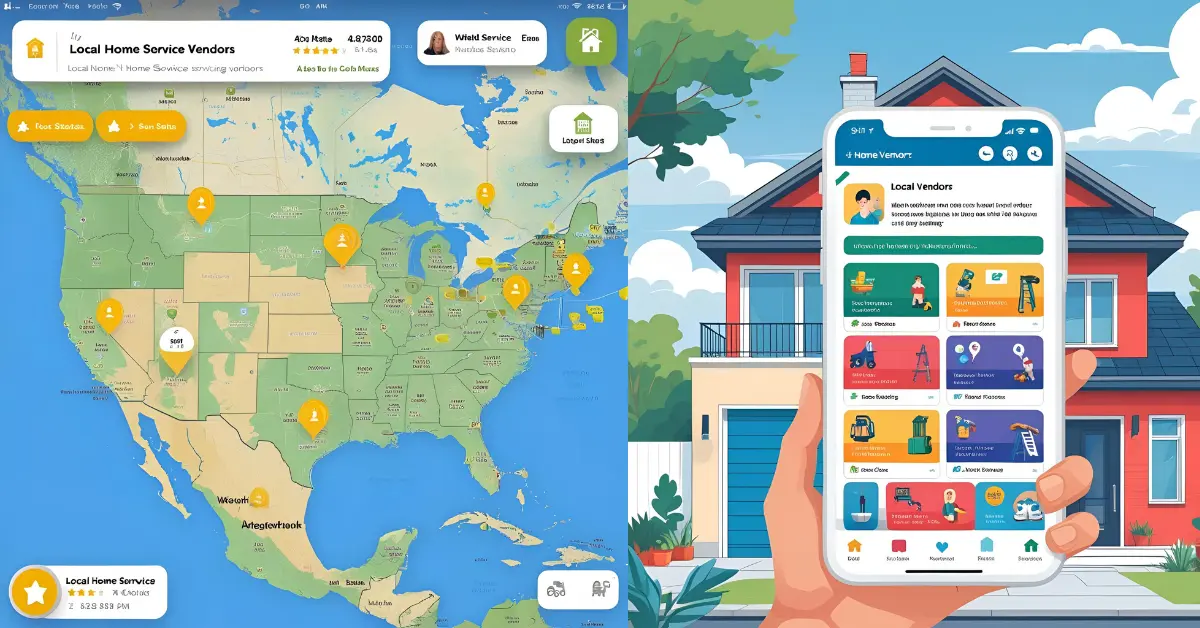



Pingback: 2025 Best App for Options Trading Robinhood Delivers—Features & Benefits - Detailed App